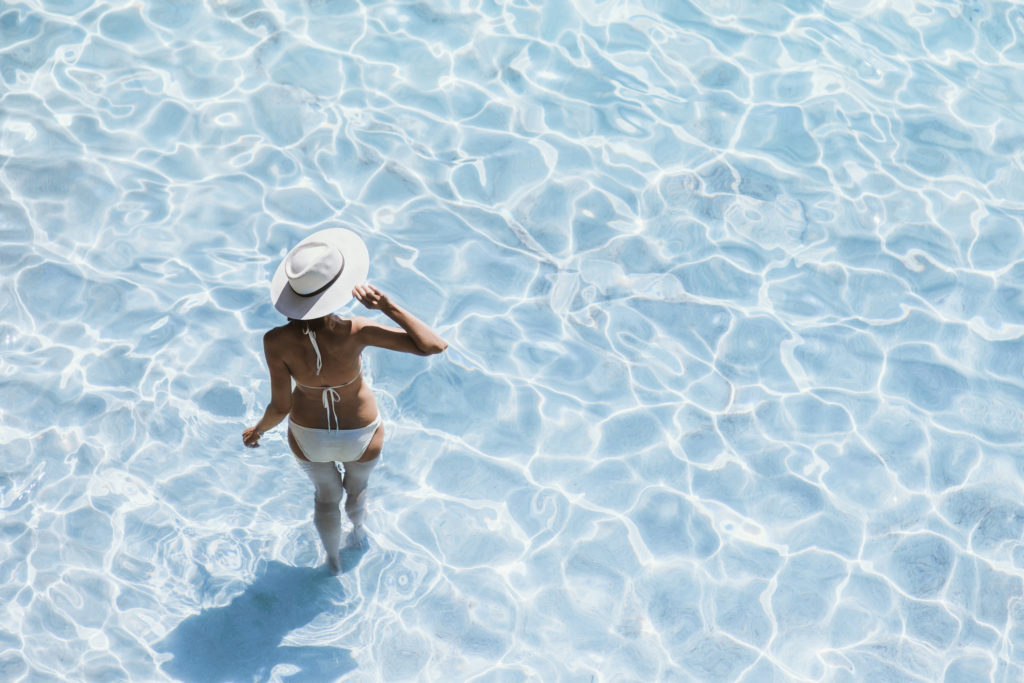
In the last newsletter, we had a ball covering toning, fitness and Yamuna® balls. In this issue, we’ll keep it straight and discuss linear rather than round props. Specifically, we’ll focus on Thera-Bands®, the Stretch Out Strap® and Fletcher® towel.
Thera-Bands® offer resistance and can be used to strengthen the upper or lower body, as some of you know from having literally been tied up during a class! 🙂 It is helpful to realize that different manufacturers have different color coding to denote the resistance level, but there does not seem to be a universal color coding system. For example, a “yellow” Thera-Band® from Balanced Body® and OPTP® is the lightest resistance, but from Merrithew® it is regular strength.
Tip:
Check the resistance level from the manufacturer to make sure you are getting the right level for you. It should either say light, medium or heavy or have a chart with the resistance levels.
It is helpful to realize the length and width also varies between manufacturers. Some manufactures make the bands 5 ft and others 8 ft long. Some bands are wide and others more narrow. If you want to do foot exercises, you’ll need a wide band to cover the ball of the foot and toes (as pictured at the top).
Thera-Band®:
Sets:
This is a good standard set and commonly used in Physical Therapy. They have a light to regular strength set and then another set with heavy and extra heavy bands. Please note though these bands do contain latex.
Single:
If you would like to order just one Thera-Band, you can order a light, medium or heavy from Balanced Body®. The two extra heavy strengths are not available as a regular length band but sold in yards/bulk only.
Flex-Band®:
This is a non-latex, environmentally friendly option! As I’ve mentioned, international shipping can sometimes be an issue as Merrithew® is based in Canada, but these Flex-Bands® are great. The length and width on these bands are a good fit for most exercises. The width on this band covers most feet for foot exercises.
Light
Regular Strength
Extra Strength
Stretch Out Strap®:
The Stretch Out Strap® is similar to the Thera-Band® in that it can be used for upper or lower body exercises, but obviously the strap doesn’t have the elasticity of the band. While there are not different levels of resistance like the Thera-Band®, the strap offers isometric resistance and support. As the Stretch Out Strap® name implies, the strap is great for stretching. Where a band doesn’t necessarily hold the weight of the leg in a hamstring stretch very well, the strap will assist better in such stretches as it offers support without any give.
The loops on the strap are helpful not only with stretching and gauging the right level for you, but also for the grip. For those with arthritis in the hands holding something thin like a band or plain strap may not be ideal. But with the Stretch Out Strap® or similar equipment, hands can slide through the loops. Rather than grasping, an open hand can be used through the loops instead, making upper body strengthening and stretching more accessible.
Special Note:
Staying in the Pilates lane and trying to keep the newsletter concise, yoga straps have not been covered. Did want to give them a brief mention though as these straps can be useful in Pilates, Physical Therapy and of course, yoga. Yoga straps can frequently be found in the fitness section of many stores and online at Amazon etc. The Stretch Out Strap® obviously has the loops and yoga straps generally do not. Yoga straps often do have a sort of buckle which could be used to create a loop.
Fletcher Towel®:
Developed by first generation Pilates teacher, Ron Fletcher, the braided design serves a purpose. The braid places the fabric on a slight diagonal, so it has a little give, similar to the Thera-Band®, but as it is fabric, it stops like the Stretch Out Strap®. Before the braid was created, a rolled up towel was used to achieve this effect. Where a Thera-Band® offers different levels of resistance, the Fletcher® Towel meets the students where they are at. Whatever strength the student has to pull on the towel, that is the resistance he or she will get out of it. As students get stronger, the Fletcher® towel continues to match their strength. In addition, as the Fletcher® Towel is thicker, this makes it a little easier to grasp than a Thera-Band® or Stretch Out Strap®. Most people think the red Fletcher® towel is just a cute accessory, like a scarf, but the stylish braid actually has a function.
Hope this article helps you “keep it all straight” between the various Thera-Bands®, straps and even towels out there. Most of all, hope you continue to be centered and strong.
Keep Calm and Stay Aligned,
Shannon
As a reminder, this series is concentrated on equipment pieces that are accessible for home both financially and physically (easily fit into a small space). Since Pilates and other reputable manufacturers’ may not be as commonly known, this series will direct you to recognized names in the industry, but similar products may be found on Amazon or through other retailers. This is not an endorsement of any particular company or product.


